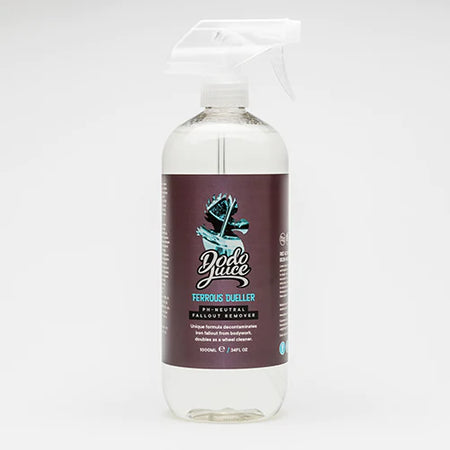Wheeler Sealer 500ml - Felgubón
-
Verð áður
-
3.990 kr
-
Tilboð
-
3.990 kr
-
Verð áður
-
Uppselt
-
Stykkjaverð
-
- Verð áður
- 3.990 kr
- Tilboð
- 3.990 kr
- Verð áður
- Stykkjaverð
When you think about wheel cleaning, you automatically think about strong cleaning chemicals, or purple colour change chemicals doing their thing. Yet it's easy to overlook the fact that a SEALED wheel gets less dirty and takes far less effort to clean.
Indeed, a well sealed wheel may just need a blast with the pressure washer and a quick once-over with a soapy mitt. No need for anything more substantial at all. That could save a fair bit of money - let alone time scrubbing with a wheel brush.
So don't spend all day waxing and sealing the bodywork and then simply leave the wheels to their own fate. Once they're clean, give them a quick spray of a suitable heat resistant wheel sealant - like Wheeler Sealer.
It's a nano formula for the best adhesion (2-4 months plus longevity) and resistance to chemicals, and can be applied dry or when the wheel is still slightly wet. Just spray it on to a clean, solvent-wiped wheel, free from contamination (and in an ideal world, one that's been fully clayed), and then buff it a few minutes later with a soft cloth. A couple of coats are recommended for full coverage. And that's it. Sealed wheels.
You'll find that contamination will still stick to the sealed surface and the wheels will still get dirty. It's car care, not witchcraft. But the contamination won't bond so well and will come off far more easily.
Also available in a 100ml sample/trial size, that should coat a set of wheels a couple of times (although spray it onto a cloth rather than directly onto the wheel if you want to make it go further). Otherwise this generous 500ml spray should keep you going for many months and years to come.
Please note that whilst Wheeler Sealer could technically be sprayed neat onto a wheel and then left to dry, we always recommend levelling/buffing with a soft cloth - especially if it looks likely to rain afterwards which could cause product streaking. Overspray should also be avoided - it may dry to shiny spots that will be difficult to remove. If it does need to be removed, use a strong solvent/panel-wipe as soon after application as possible. Otherwise claying, machine polishing or more aggressive abrasive techniques may need to be employed.
- Vörutegund: Unknown Type
- Vörumerki: dodojuiceiceland










